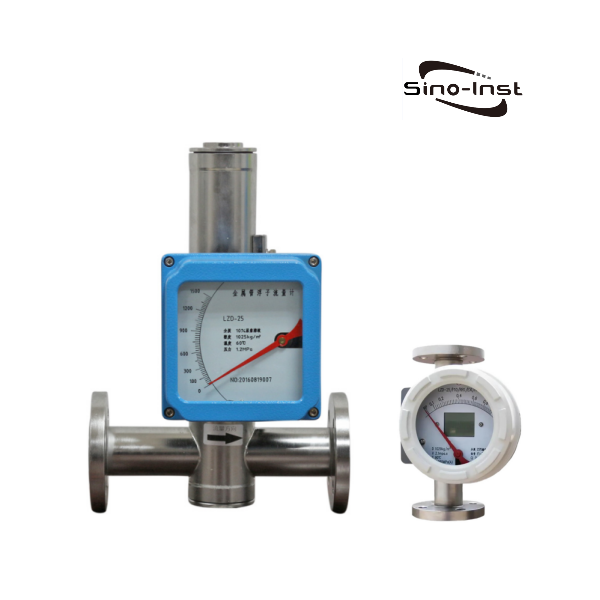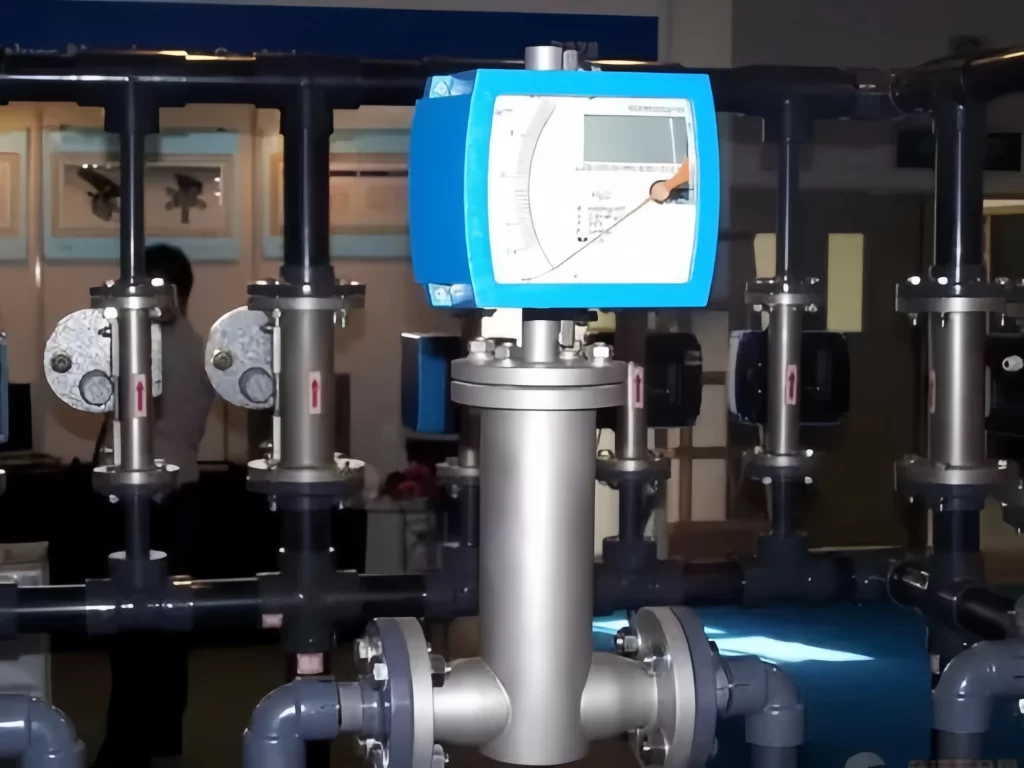
A rotameter is a device designed to measure the flow rate of fluid volume over time within a closed tube. It has a range of applications, including chemical injection, dosing, and tank blanketing.
Also known as variable area flow meters, rotameters are used to measure liquid or gas volumetric flow rates as they pass through the tapered tube of the rotameter. The flow of the liquid or gas raises the meter’s float, increasing the area through which the media may pass. The larger the amount of flow, the higher the float is raised.
Whether measuring air, oxygen, nitrogen, carbon dioxide (CO2), or other gases, rotameters provide reliable and accurate results. In this blog post, we will explore various types of rotameters, their working principle, and applications, and focus on high-pressure rotameters too.
To begin with: What is a Rotameter?
Rotameter or The Variable Area Flow meter is one of the oldest and most mature principles in flow measurement with its simple design. A float rises inside a conically shaped glass tube as the flow increases and its position on a scale can be read off as the flow rate. Since this measuring method is purely mechanical, it is as simple as it is trustworthy.
How do Rotameters Work?
Fluid enters the tube from the bottom and exits through the top, with the flow being measured by the device.
When there is no flow, the float will rest at the bottom of the tube. In this static state, the float’s diameter is nearly equal to the inside diameter of the glass tube.
As fluid enters the tube, the flow area of the annular opening increases, causing the float to rise. The float continues to move upward until the lifting force, generated by the pressure difference between its upper and lower surfaces, balances with the weight of the float.
As the flow rate increases, the lifting force and pressure difference temporarily rise, causing the float to move further up the tube. This increases the area of the annular opening, which reduces the lifting force until it matches the weight of the float.
The difference in pressure is maintained by adjusting the area of the annular opening relative to the flow rate. The scale marked on the glass tube then indicates the flow rate.
When using rotameters, calibration is essential for each specific gas or fluid under defined conditions. Typically, these conditions, along with the flow range and units of measurement, are indicated on the side of the flow meter.
Users should adjust the flow tube readings to account for any changes in flow conditions. Although manufacturers usually provide details on the necessary corrections for the meters, this guidance is not always available.
Working Principle of a Rotameter
One of the formulas used in rotameters is:
Q=kA√GH,
Where,
Q = volumetric flow rate,
k = a constant,
A = annular area contained between the float and the wall of the tube.
g = the force of gravity,
h = the pressure drop of the float
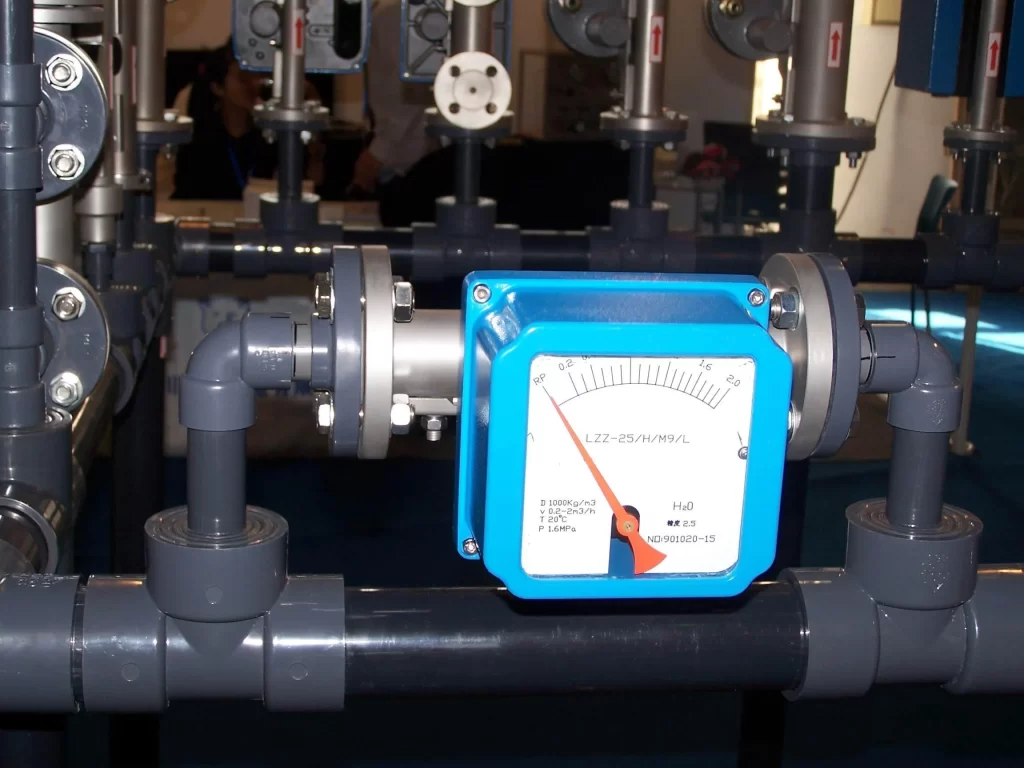
Rotameters for Different Gases
When measuring gases, the type of gas can significantly affect the choice of the rotameter. Below, we will explore several types of rotameters designed for specific gases, including air, oxygen, nitrogen, CO2, and high-pressure applications.
1. Air Rotameter
The air rotameter is a type of gas rotameter specifically designed to measure the flow of air. Since air is one of the most commonly used gases in industrial applications, air rotameters are prevalent in laboratories, HVAC systems, pneumatic control systems, and many other settings.
One of the critical factors to consider when using an air rotameter is the gas density, which can vary based on temperature and pressure.
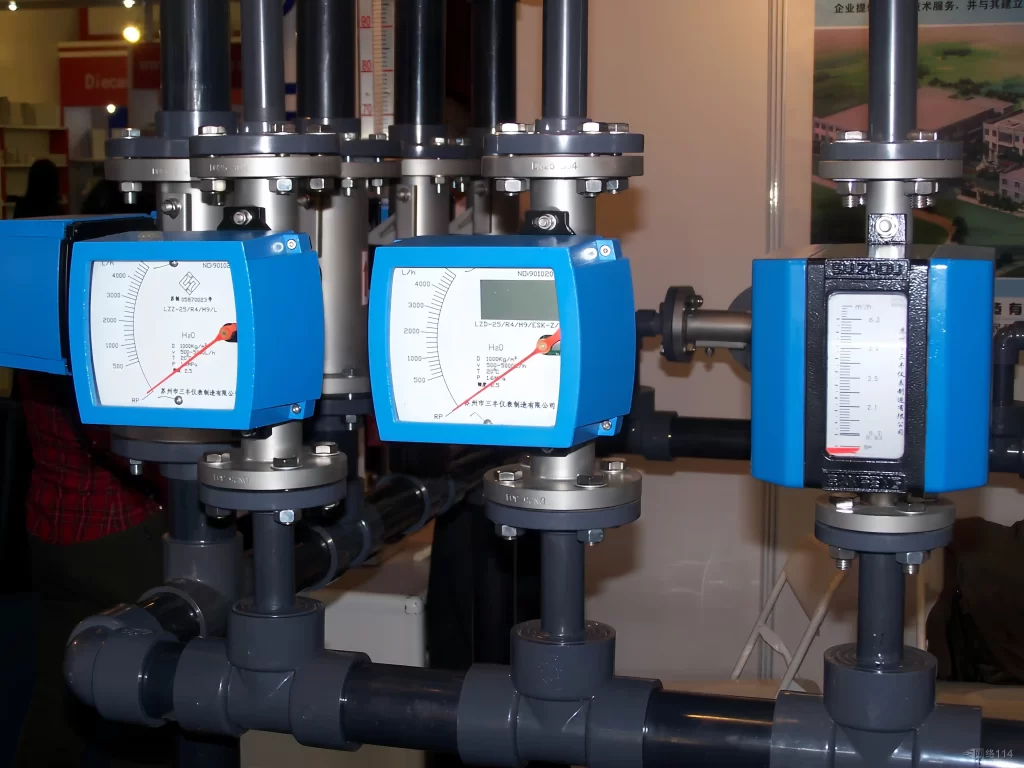
Air rotameters are typically calibrated at standard conditions (STP—Standard Temperature and Pressure), and adjustments may be necessary if the operating conditions deviate significantly from standard.
2. CO2 Rotameter
A CO2 rotameter is used in critical measurements in various industries, including beverage carbonation, environmental monitoring, and laboratory experiments.
Since CO2 has different density and viscosity properties than air, a CO2 rotameter must be specifically calibrated for accurate measurements.
For instance, in the beverage industry, CO2 is injected into soft drinks and beer to create carbonation, and precise control over CO2 flow is essential for product consistency. CO2 rotameters are also used in environmental applications to monitor CO2 levels in the atmosphere or in enclosed spaces to ensure proper ventilation.
Calibration for carbon dioxide (CO₂)
- High density: Carbon dioxide is denser than air, and the flow behavior differs significantly from lighter gases like nitrogen and oxygen. Accurate calibration should take the gas’s density into account.
- Pressure sensitivity: CO₂ is sensitive to changes in pressure, so calibration should be done at specific pressure points to account for any compressibility effects.
3. Oxygen Rotameter
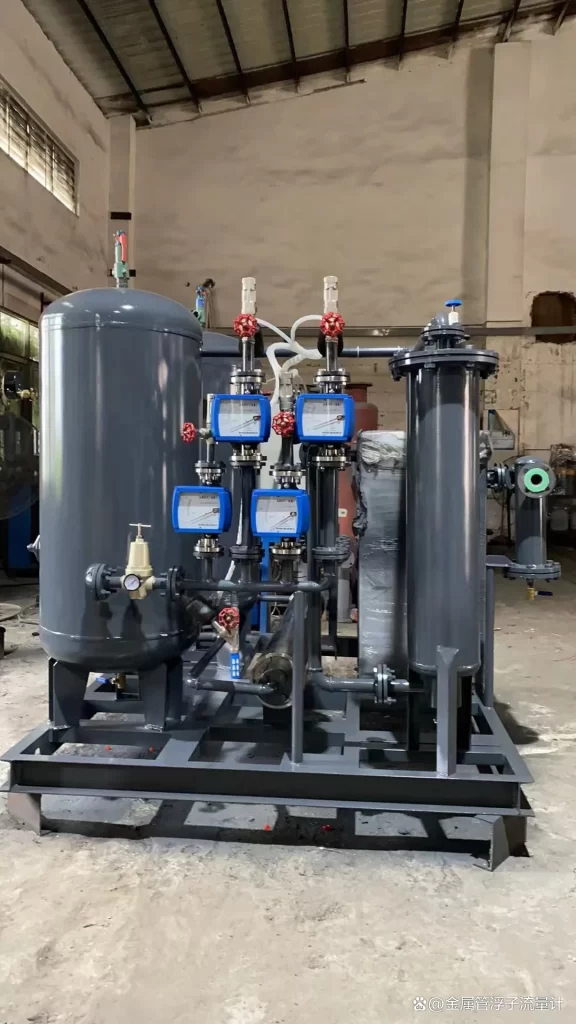
The oxygen rotameter is designed to measure the flow of oxygen, often used in healthcare applications, particularly in oxygen therapy and medical gas systems.
Given the potential health hazards associated with oxygen systems, oxygen rotameters are often built with high precision and are regularly calibrated to ensure accuracy and safety.
Calibration for oxygen (O₂)
- High reactivity: Oxygen is highly reactive and can cause combustion or degradation of certain materials. Ensure that the rotameter’s components are oxygen-safe.
- Calibration factors: Oxygen has a low viscosity, so it flows differently than gases with higher viscosity like carbon dioxide. Special attention should be paid to the density and compressibility of oxygen.
4. Nitrogen Rotameter
The flow of nitrogen is often measured using rotameters to ensure the desired flow rate is maintained. Since nitrogen is a relatively low-cost, widely available gas, accurate nitrogen flow control is vital in many industrial operations to prevent waste and ensure the quality of the final product.
Calibration for nitrogen (N₂)
- Inert nature: Nitrogen is an inert gas and doesn’t react with other substances. However, its low viscosity and compressibility should still be considered during calibration.
- Flow consistency: Nitrogen is often used as a calibration standard for other gases, so accurate calibration is crucial.
High-Pressure Rotameter
High-pressure rotameters are frequently used in industries like natural gas, petrochemical, and gas distribution networks, where accurate flow measurement at elevated pressures is nitpicking.
Unlike standard rotameters, high-pressure versions are made to withstand higher mechanical stresses and are oftentimes armored with stronger materials and enhanced sealing mechanisms to ensure accuracy and durability under pressure.
These devices may also feature specialized floats and tapered tubes to maintain consistent readings despite the fluctuating pressures that can occur in high-pressure systems.
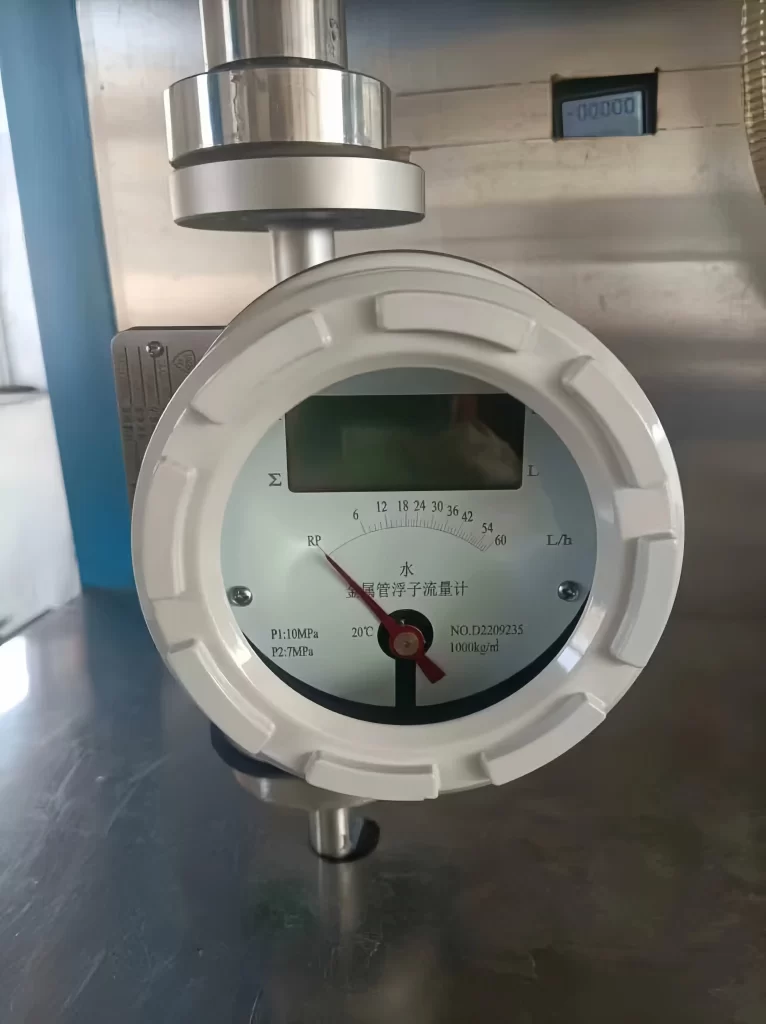
The key to using a high-pressure rotameter effectively is understanding the impact of pressure on gas density and viscosity, as these factors can alter flow characteristics. High-pressure rotameters are often calibrated for specific operating conditions to ensure they provide accurate readings even under challenging conditions.
Application of High-pressure Rotameter
- Used to monitor and control flow rates of various chemicals in manufacturing processes.
- Monitoring flows in refineries and processing plants.
- Common in laboratory settings for precise flow measurement during experiments.
More Flow Measurement Solutions
- High Accuracy Flow Meters: A Key To Precision In Flow Measurement
- Guide for High Pressure Flow Meters – Industrial Liquid & Gas Measurement
- Guide To Low Temperature Flow Meters: Accuracy In Cold Fluid Measurement
- Solution For Low Flow And Low Volume Applications: Low Flow Meter In Detail
- Turbine Water Flow Meter: A Versatile And Reliable Choice For Water Flow Measurement
- Pulse Output Flow Meters for Better Water Flow Measurement
- Ultrasonic Clamp On Flow Meter – For Easier Water Flow Measurement
- Guide On Industrial Air Flow Measurement Devices
- Everything You Need To Know About Chemical Flow Meters
- Boat Fuel Flow Meters: Installation Tips and Comparability
- Industrial Refrigerant Flow Meters
- Getting to Know The Propane Flow Meters: Better Monitoring of Propane Utilization
By understanding the principles behind different types of rotameters and their applications, industries can make better choices when selecting flow measurement equipment, ensuring that they meet the specific requirements of their operations.
Sino-Inst not only provides gas rotameters but also various types of liquid rotameters. Optional configurations include 4-20mA signal remote transmission, electronic digital display, explosion-proof, corrosion-resistant, alarm, high-temperature resistance, and other customized parameters.
If you need to purchase gas rotameters or have related technical questions, please feel free to contact our sales engineers!
-1.jpg)
